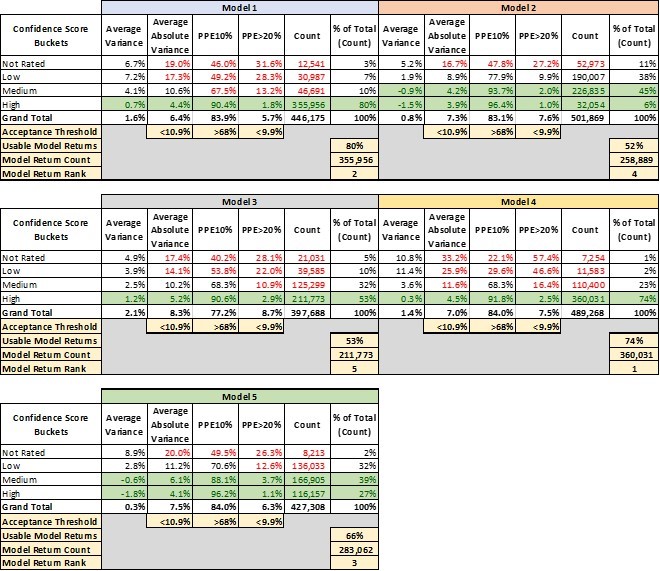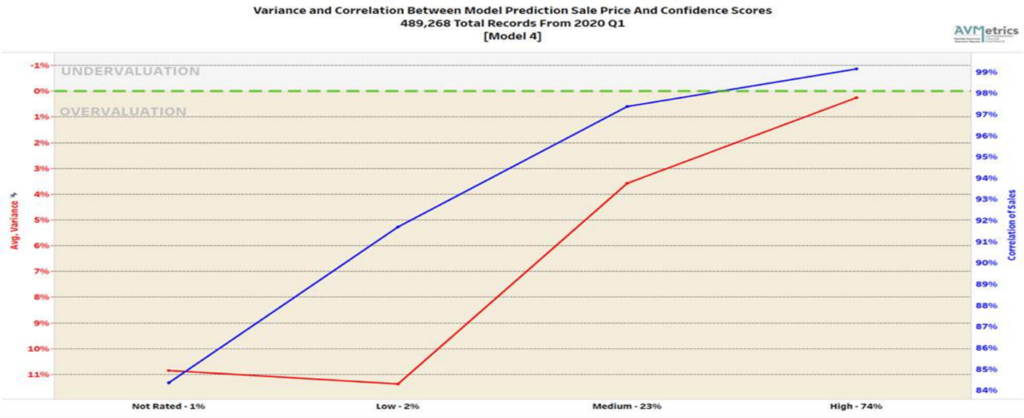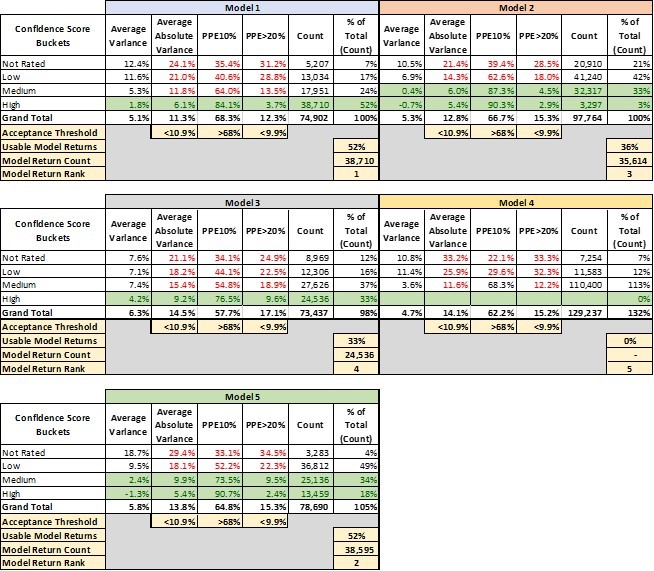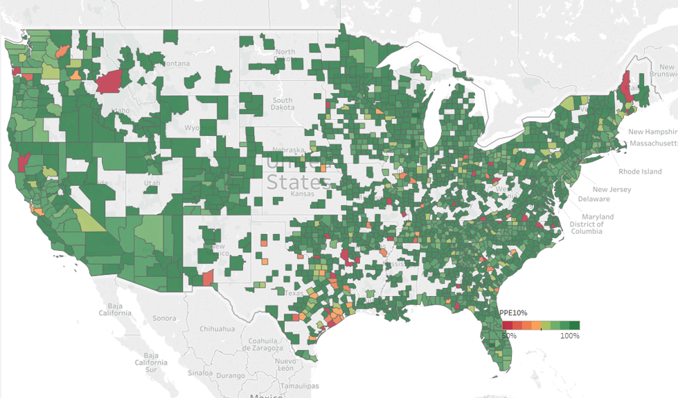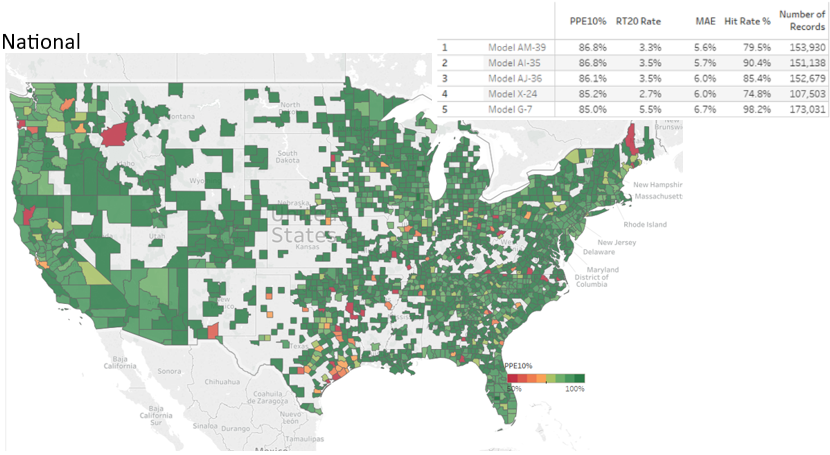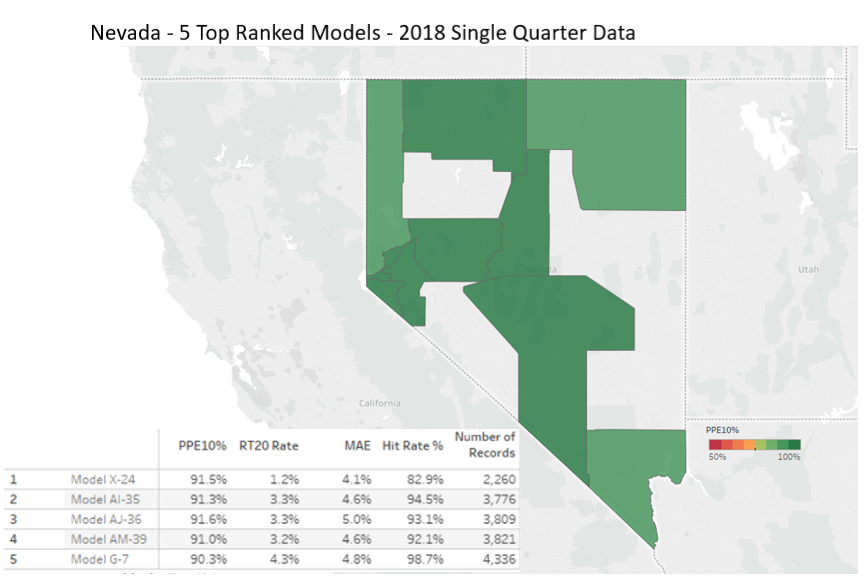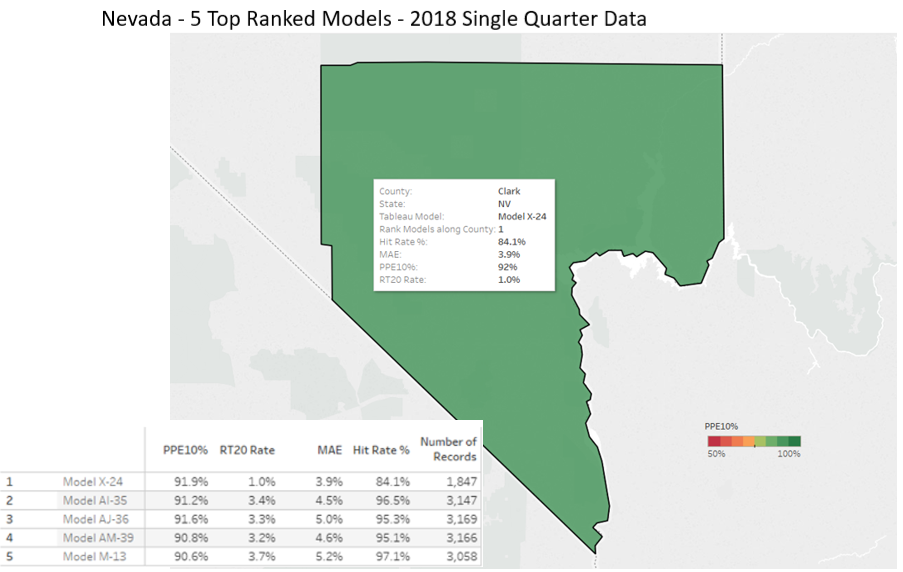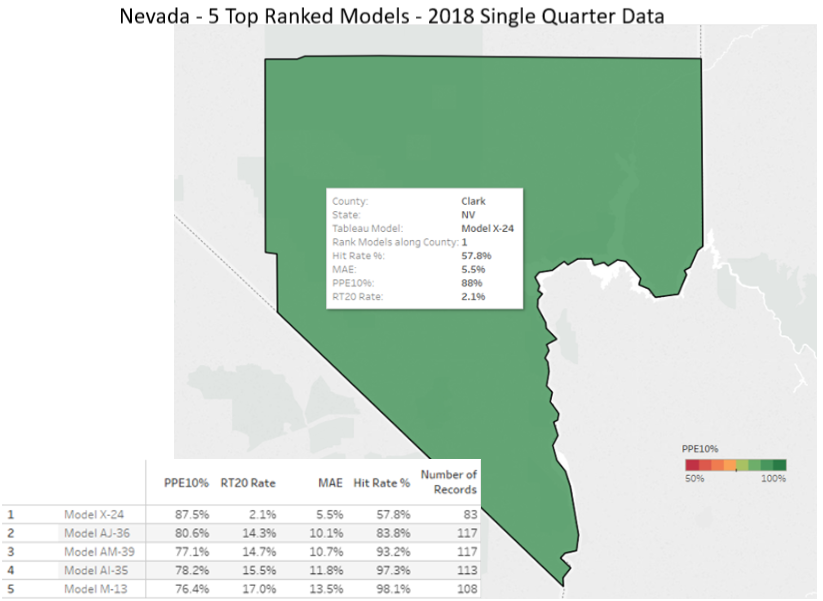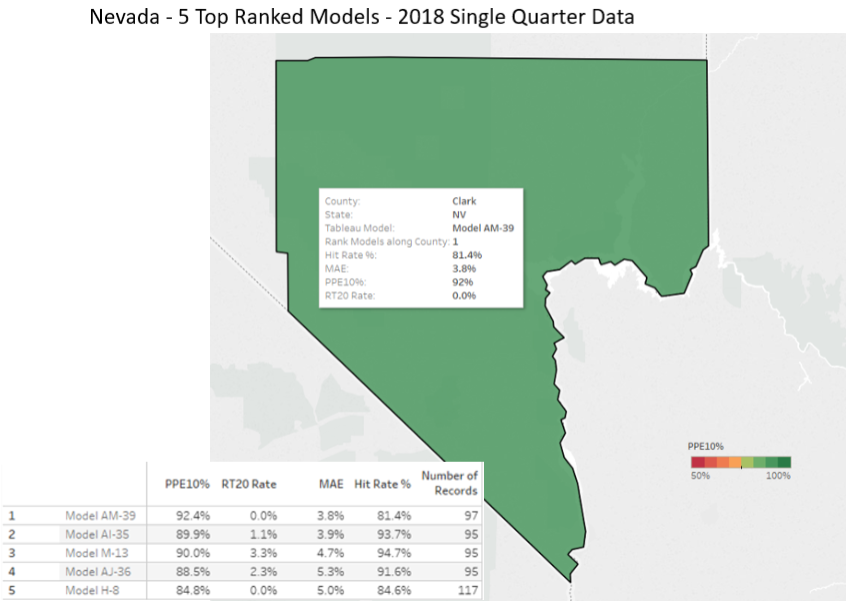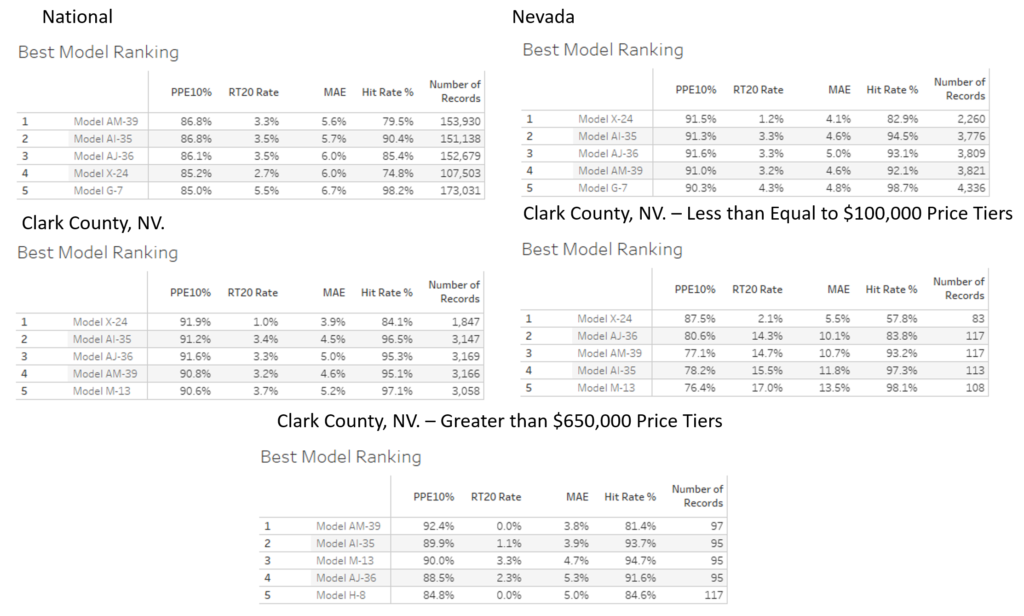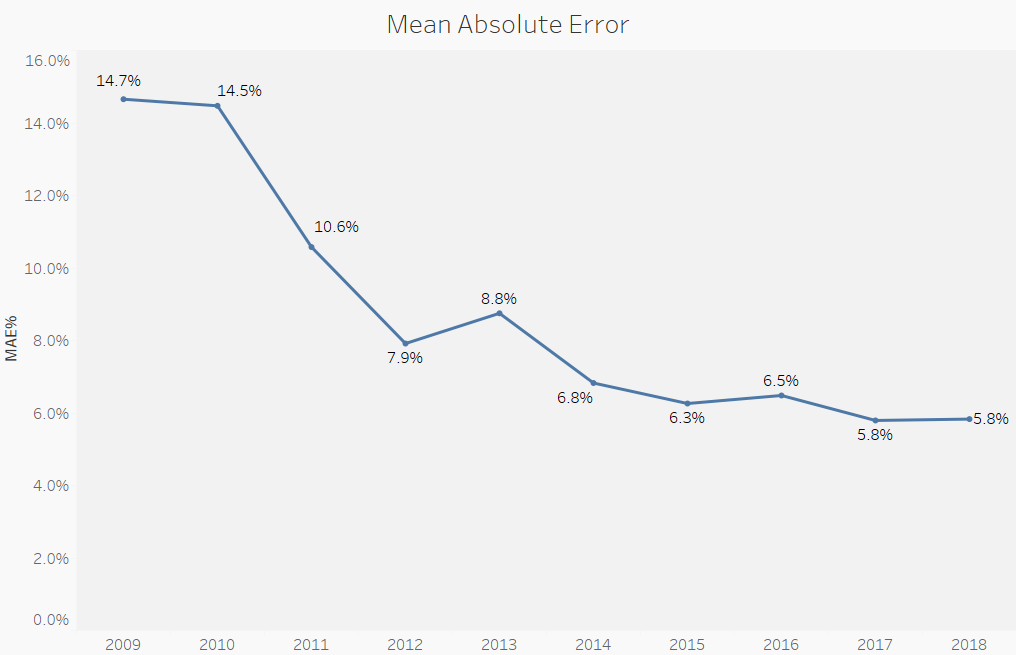AVMs are not only fairly accurate, they are also affordable and easy to use. Unfortunately, using them in a “compliant” fashion is not as easy. Regulatory Bulletins OCC 2010-42 and OCC 2011-12 describe a lot of requirements that can be challenging for a regional or community institution:
- ongoing independent testing and validation and documentation of testing;
- understanding each AVM model’s conceptual and methodological soundness;
- documenting policies and procedures that define how to use AVMs and when not to use AVMs;
- establishing targets for accuracy and tolerances for acceptable discrepancies.
The extent to which these requirements are applied by your regulator is most likely proportional to the extent to which AVMs are used within your organization; if AVMs are used extensively, regulatory oversight will likely demand much tighter adherence to the requirements as well as much more comprehensive policies and procedures.
Although compliance itself is not a function that can be outsourced (it is the sole responsibility of the institution), elements of the regulatory requirements can be effectively handled outside the organization through outsourcing. As an example, the first bullet point, “ongoing independent testing and validation and documentation of testing,” requires resources with the competencies and influences to effectively challenge AVM models. In addition, the “independent” aspect is challenging to accomplish unless a separate department within the institution is established that does not report up through the product and/or procurement verticals (e.g. similar to Audit, or Model Risk Management, etc.). Whether your institution is a heavy AVM user or not, the good news is that finding the right third-party to outsource to will facilitate all of the bullet points above:
- documentation is included as part of an independent testing and validation process and it can be incorporated into your policies and procedures;
- the results of the testing will help you shape your understanding of where and when AVMs can and cannot be used;
- the results of the testing will inform your decisions regarding the accuracy and performance thresholds that fit within your institution’s risk appetite. In addition,
- an outsourced specialist may also be able to provide various levels of consultation assistance in areas where you may not have the internal expertise.
Before deciding whether outsourcing makes sense for you, here are some potential considerations. If you can answer “no” to all of these questions, then outsourcing might be a good option, especially if you don’t have an independent Analytics unit in-house that has the resource bandwidth to accommodate the AVM testing and validation processes:
- Is this process strategically critical? I.e., does your validation of AVMs benefit you competitively in a tangible way?
- If your validation of AVMs is inadequate, can this substantially affect your reputation or your position within the marketplace?
- Is outsourcing impractical for any reason? I.e., are there other business functions that preclude separating the validation process?
- Does your institution have the same data availability and economies of scale as a specialist?
The Way Forward
Here are some suggestions on how to go about preparing yourself for selecting your outsource partner:
- Specify what you need outsourced. If you already have Policies and Procedures documented and processes in place, there may be no need to look for that capability, but there will necessarily still be the need to incorporate any testing and validation results into your existing policies and procedures. If you have previously done extensive evaluations of the AVMs that you use, in terms of their models’ conceptual soundness and outcomes analysis, there’s no need to contract for that, either. See our article on Regulatory Oversight to get some ideas about those requirements.
- Identify possible partners, such as AVMetrics, and evaluate their fit. Here’s what to look for:
- Expertise. It’s a technical job, requiring a fair amount of analysis and a tremendous amount of knowledge about regulatory requirements in general, and specifically knowledge relative to AVMs; check the résumés of the experts with whom you plan to partner.
- Independence. A vendor who also sells, builds, resells, uses or advocates for certain AVMs may be biased (or may appear to be biased) in auditing them; validation must be able to “effectively challenge” the models being tested.
- Track record. Stable partners are better, and a long term relationship lowers the cost of outsourcing; so look for a partner with a successful track record in performing AVM validations.
- Open up conversations with potential partners early because the process can take months, particularly if policies and procedures need to be developed; although validations can be successfully completed in a matter of days, that is not the norm.
- Make sure your staff has enough familiarity with the regulatory requirements so as to be able to oversee the vendor’s work; remember that the responsibility for compliance is ultimately on you. Make sure the vendor’s process and results are clearly and comprehensively documented and then ensure that Internal Audit and Compliance are part of that oversight. “Outsource” doesn’t mean “forget about it;” thorough and complete understanding and documentation is part of the requirements.
- Have a plan for ongoing compliance, whether it is to transition to internal resources or to retain vendors indefinitely. Set expectations for the frequency of the validation process, which regulations require to be at least annually or more often, commensurate with the extent of your AVM usage.
In Conclusion
AVM testing and validation is only one component in your overall Valuation and evaluation program. Unlike Appraisals and some other forms of collateral valuation, AVMs, by their nature as a quantitative predictive model, lend themselves to just the type of statistically-based outcomes analysis the regulators set forth. Recognizing this, elements of the requirements can be an outsourced process, but it must be a compliment to enterprise-wide policies and practices around the permissible, safe and prudent use of valuation tools and technologies.
The process of validating and documenting AVMs may seem daunting at first, but for the past 10 years AVMetrics has been providing ease-of-mind for our customers, whether as the sole source of an outsourced testing and validation process (that tests every commercial AVM four times a year), or as a partner in transitioning the process in-house. Our experience, professional resources and depth of data have enabled us to standardize much of the processing while still providing the customization every institution needs. And probably one of the most critical boxes you can check off when outsourcing with AVMetrics is the very large one that requires independence. It also bears mentioning that having been around as long as we have, our customers have generally all been through at least one round of regulatory scrutiny, and the AVMetrics process has always passed regulatory muster. Regulatory reviews already present enough of a challenge, so having a partner with established credentials is critical for a smooth process.


